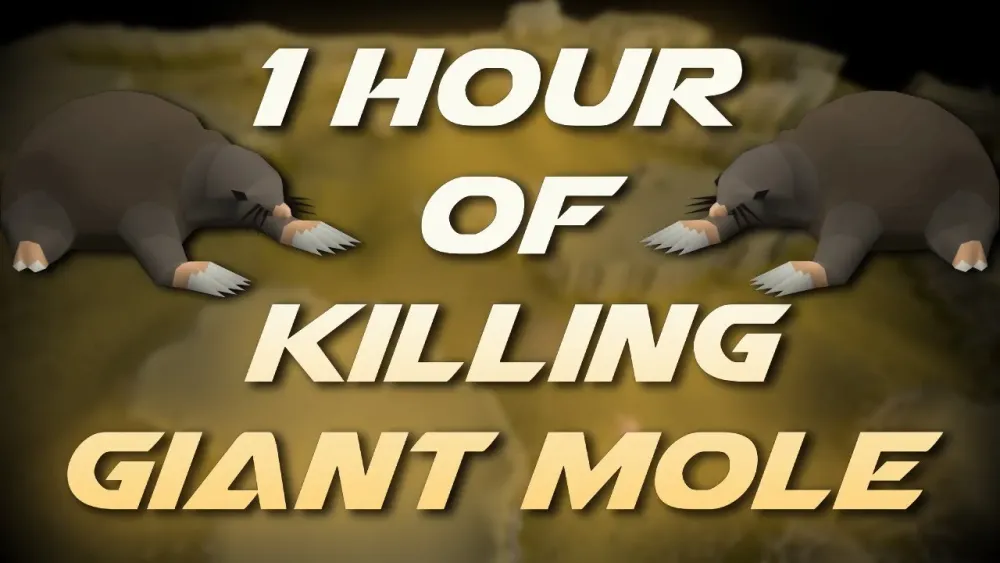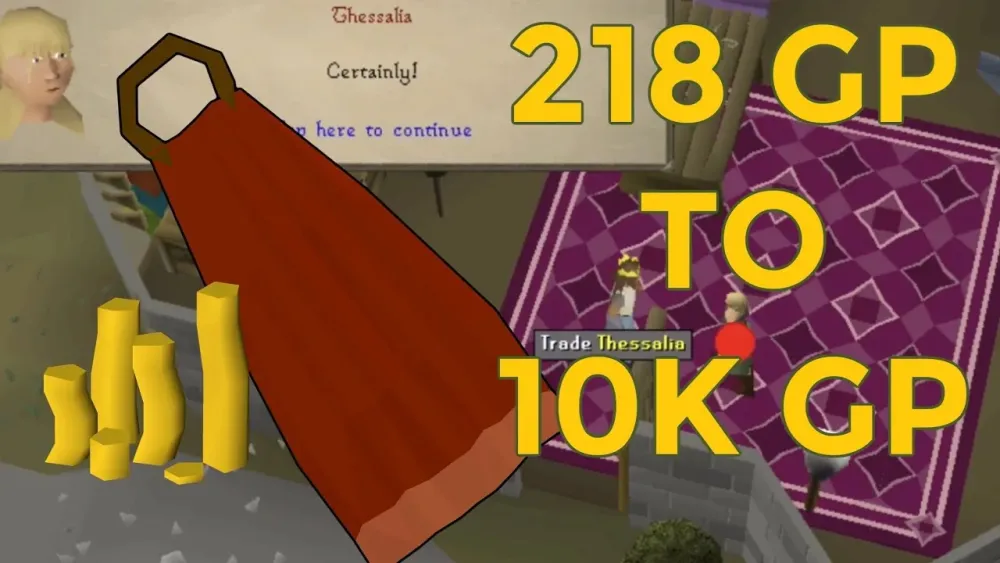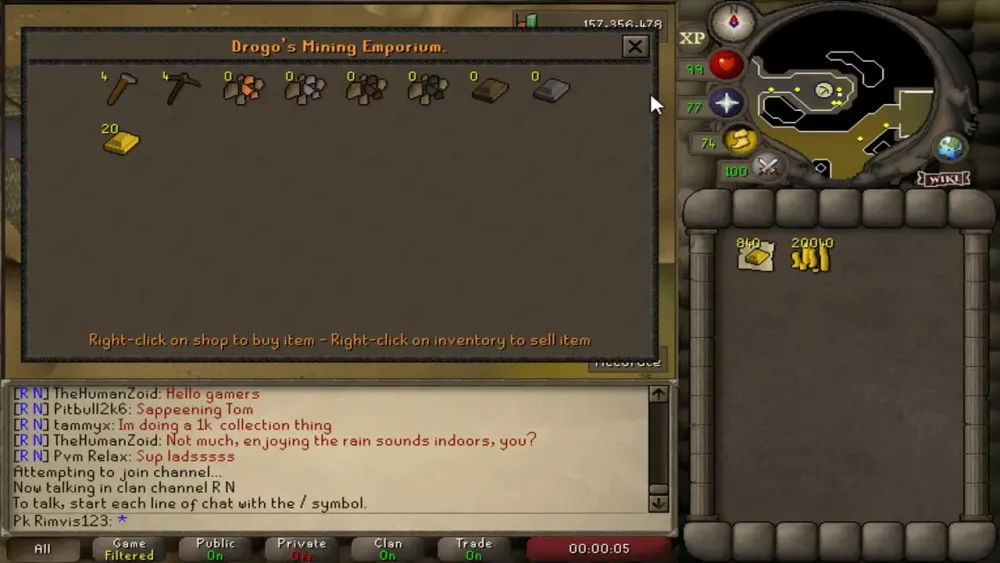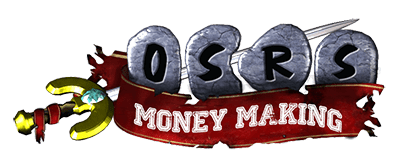Your cart is empty
Exchanging Mole Parts OSRS A Comprehensive Money-Making Guide

In Old School RuneScape (OSRS), exchanging mole parts is a niche but potentially profitable money-making method that involves trading mole claws and mole skins with Wyson the gardener in Falador Park for bird nests. These nests can contain valuable seeds, jewellery, or be empty, offering players a chance to earn gold pieces (GP) through a click-intensive process. This guide dives into the mechanics, profitability, strategies, and tips for exchanging mole parts, optimized for players looking to maximize their GP per hour in 2025.
The core of this money-making method revolves around obtaining mole claws and mole skins, typically from killing the Giant Mole or purchasing them on the Grand Exchange (GE), and exchanging them for nest boxes. Here’s a breakdown of how it works.
What Are Mole Parts?
Mole claws and mole skins are drops from the Giant Mole, a boss located beneath Falador Park. These items can be traded to Wyson the gardener for bird nests, which may contain:
- Seed nests: Contain various seeds, including high-value ones like Dragonfruit, Redwood, and Spirit seeds.
- Jewellery nests: Include rings that can be enchanted for additional profit.
- Empty nests: Can be crushed for profit using a pestle and mortar.
Exchange Mechanics
Wyson accepts noted mole claws and mole skins at a 1:1 ratio for nest boxes. According to recent data, the nest distribution is approximately:
| Nest Type | Percentage |
|---|---|
| Seed Nests | 60-72% |
| Jewellery Nests | 20-25% |
| Empty Nests | 8-15% |
Note: The exact ratio varies, with sources reporting conflicting figures (e.g., 60/25/15 or 72/20/8). Seed nests are the most valuable, making their drop rate critical to profitability.
Step-by-Step Guide to Exchanging Mole Parts

Follow these steps to start exchanging mole parts efficiently and maximize your profits.
Step 1: Acquiring Mole Parts
You have two main options for obtaining mole claws and mole skins:
- Farming the Giant Mole: Requires combat skills (recommended 70+ Attack, Strength, Defence) and completion of the Falador Hard Diary for noted drops. Each kill yields multiple claws and skins, but this is time-intensive.
- Buying on the Grand Exchange: Purchase noted mole claws and skins. Be cautious of the low buy limit (50 per 4 hours for each), which can take days to accumulate large quantities (e.g., 6,000 parts takes ~10 days).
Step 2: Exchanging with Wyson
Travel to Falador Park and trade your noted mole parts with Wyson the gardener. He provides nest boxes, which can be banked or opened immediately. If your inventory fills, Wyson automatically provides nest boxes to save space.
Step 3: Processing Nest Boxes
Take the nest boxes to a bank with a deposit interface (e.g., Falador Bank). Right-click each box to deposit contents directly into your bank. Then:
- Withdraw 16 seed nests or 14 jewellery nests at a time for efficient processing.
- Separate seeds and jewellery from nests (click-intensive).
- Crush empty nests with a pestle and mortar for additional profit (crushed nests sell for ~2.7k GP each).
Pro Tip: Expect to process 4,000–6,000 nests per hour, depending on your clicking speed and setup.
Profitability Analysis

Exchanging mole parts can be profitable, but it’s heavily dependent on market prices and RNG (random number generation) for high-value seeds. Let’s break down the economics.
Costs and Revenue
As of May 2025, approximate GE prices are:
- Mole claw: ~5,100 GP
- Mole skin: ~7,000 GP
- Bird nest (empty): ~2,700 GP
- High-value seeds (e.g., Dragonfruit, Redwood, Spirit): 100k–500k+ GP
The expected loot per mole part is around 6,396 GP, but with an average loss of -48 GP per part due to the high cost of mole parts. However, crushing nests and selling high-value seeds can tip the scales into profit.
Risks and Considerations
Profitability isn’t guaranteed due to:
- RNG Dependency: Low-value seeds (e.g., tomato, cabbage) can result in losses if high-value seeds are rare. Save up large quantities (e.g., 3,000+ parts) to mitigate bad luck.
- Market Fluctuations: Check live GE prices before investing, as nest and seed prices can crash (e.g., nest prices dropped 500 GP in 2021 due to oversupply).
- Buy Limits: The 50-part limit per 4 hours makes scaling this method challenging without alts or bulk trading.
Historical Data: In 2017, this method could yield up to 3.5M–5M GP/hour, but recent analyses suggest lower profits (or losses) due to inflated mole part prices and variable seed drops.
Tips for Maximizing Efficiency and Profit
To make exchanging mole reflective essay parts a worthwhile endeavor, consider these strategies.
Optimize Your Setup
Use a bank with a deposit box (e.g., Falador or GE) to streamline nest processing. Set up your inventory to minimize clicks:
- Keep a pestle and mortar for crushing empty nests.
- Use bank presets to quickly withdraw nests in batches.
- Enchant jewellery from nests (requires Magic level 27+) for extra GP.
Leverage High Farming Levels
Some players report better seed drops with higher Farming levels (e.g., 90+), though this is anecdotal. If you have high Farming, consider exchanging parts for nests rather than selling them directly on the GE.
Combine with Other Activities
Since buying mole parts is limited by GE restrictions, use this method as a side hustle while training other skills or farming the Giant Mole for its pet or other drops. This maximizes your overall GP/hour.
Is Exchanging Mole Parts Worth It in 2025?
Exchanging mole parts remains a viable but niche money-making method in OSRS. Its profitability hinges on market conditions, your patience with click-intensive tasks, and luck with seed drops. Here’s a quick pros and cons list:
Pros
- Low Requirements: No combat or skill levels needed if buying parts.
- Passive Setup: Buy parts over time and process nests in bulk.
- Potential High Rewards: Rare seeds can yield significant profits.
Cons
- Click-Intensive: Processing thousands of nests is tedious.
- RNG Risks: Losses are possible with poor seed drops.
- Buy Limit Bottleneck: Scaling is difficult without multiple accounts.
Final Verdict
For players with high Farming levels, patience, and a willingness to monitor GE prices, exchanging mole parts can be a decent side hustle, potentially yielding 1M–3M GP/hour in optimal conditions. However, for those seeking consistent profits, alternatives like tanning dragonhides (~600k GP/hour) or growing magic saplings may be less risky.
Recommendation: Start with a small batch (e.g., 500 parts) to test profitability at current GE prices. If you enjoy the process and hit valuable seeds, scale up cautiously. Always check live prices on the Grand Exchange and consider crushing nests for extra GP.
Ready to dive into this OSRS money-making method? Grab your mole parts, head to Falador Park, and start exchanging with Wyson. Share your loot results in the comments or on the r/2007scape subreddit to help the community track profitability in 2025!

